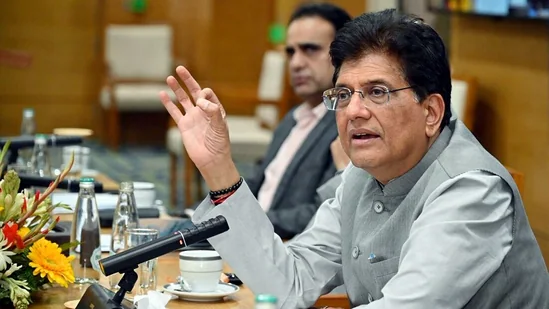India Draws the Line: Trade Deals Must Protect Farmers, Dairy, and Worker
- MGMMTeam

- Nov 12
- 2 min read
At the Udyog Samagam 2025 in New Delhi, Commerce and Industry Minister Piyush Goyal declared that India will never compromise on the interests of its farmers, dairy sector, and workers for the sake of foreign trade deals. Goyal reaffirmed that India’s trade strategy rests on fairness, balance, and self-respect — prioritizing domestic welfare over external pressure.

Exploring New Markets Amid Tariffs
The Minister noted that steep U.S. tariffs have impacted India’s fishery exports. In response, India is turning to new destinations such as Russia and Gulf nations to expand market access. This diversification reflects a long-term strategy to reduce dependence on the American market while strengthening India’s export resilience.
India–US Trade Talks: Progress and Sensitivities
Goyal acknowledged that while discussions with the United States are ongoing, several sensitive and complex issues remain unresolved. With five rounds of negotiations already held for the first phase of a Bilateral Trade Agreement (BTA), both sides are advancing cautiously. The goal is ambitious — to raise trade volume to $500 billion by 2030, up from the current $191 billion.
Tariff Tensions and Economic Resilience
Relations between India and the U.S. have been strained since the Trump administration imposed 50% tariffs on Indian goods, including an additional 25% linked to Russian crude purchases. Despite this, the U.S. remains India’s largest trading partner, with bilateral trade reaching $131.84 billion in 2024–25. However, India’s exports to the U.S. dipped by nearly 12% in September due to these tariff barriers.
Balancing Domestic Priorities with Global Goals
India’s careful negotiation strategy stems from a need to protect vulnerable domestic sectors. The dairy and agriculture industries form the backbone of rural employment, while the fisheries sector supports millions of livelihoods. Opening these areas without safeguards could lead to job losses and social instability, which the government is determined to avoid.
The MGMM Outlook
India has drawn a decisive line in global trade negotiations — one that defends its farmers, dairy producers, and working-class backbone from exploitation. Commerce Minister Piyush Goyal’s declaration at the Udyog Samagam 2025 underscores a renewed nationalism in trade policy, where self-respect outweighs external coercion. As U.S. tariffs continue to hurt Indian exports, especially in fisheries, India’s pivot toward Russia and Gulf markets symbolizes more than economic diversification — it’s a statement of sovereignty.
In the larger picture, India’s firm stance reflects a maturing economic confidence that refuses to let foreign interests dictate domestic priorities. The government’s insistence on protecting agriculture and dairy from liberalized trade pressures ensures the preservation of millions of livelihoods that sustain India’s rural heart. Rather than yielding to American tariff politics, New Delhi is building a multipolar trading future — one where prosperity is aligned with self-reliance, and national dignity shapes the terms of engagement.
(Sources: Business Standard, Economic Times, Times of India)




Comments